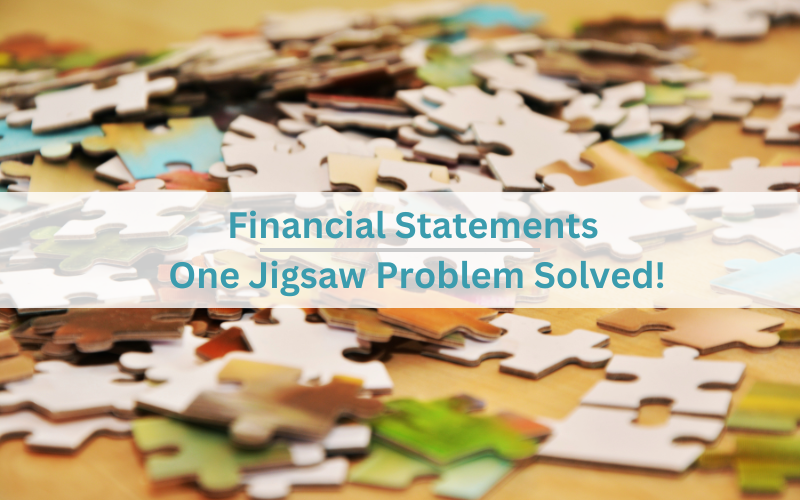
The Role of Financial Statements in Your Business
Accredited Supplier, Sones Accountancy Services state that financial statements are vital tools that every business owner should understand to manage business finances effectively. Knowing how to read and interpret these statements can provide insights into a business’s health and guide smarter financial decisions.
Below is an overview of the three main types of financial statements and details of how to use them to improve your business.
Profit & Loss Statement (P&L)
Also known as the income statement, it provides a clear picture of a business's financial health and performance by showing revenues, costs, and expenses over a specific period (usually monthly, quarterly, or annually). It identifies whether you are making a profit or loss.
Key components:
- Revenue - total income your business earned from sales or services.
- Cost of Goods Sold (COGS) - direct costs of producing goods or services you sell.
- Gross profit – the difference between revenue and COGS.
- Operating expenses - costs not directly tied to production, such as rent, utilities, and wages.
- Net profit - your bottom line, or what remains after all expenses are deducted from gross profit.
To effectively monitor your business's financial health, identify trends in your revenue and expenses over time; are they increasing, decreasing, or remaining consistent? Steady revenue growth alongside controlled expenses indicates a well-balanced and healthy business.
In addition, regularly monitor your profit margins by calculating your gross and net profit margins (gross or net profit divided by revenue). If your margins are low, it may suggest that costs are too high, or your pricing is too low. For instance, if you are a builder and notice that material costs (COGS) are significantly eating into your profits, it might be time to renegotiate supplier contracts or revisit your pricing strategy to ensure better profitability.
Balance Sheet
A balance sheet provides a snapshot of your business’s financial position at a specific point in time. It shows what you own (assets), what you owe (liabilities), and your net worth (equity).
Key components:
- Assets - resources owned by your business (e.g., cash, equipment, and inventory).
- Liabilities - debts or obligations (e.g., loans, unpaid bills).
- Equity - the value left after subtracting liabilities from assets. This represents your ownership stake in the business.
Assessing liquidity is essential for understanding how easily you can cover short-term liabilities with your current assets. By comparing your current assets, such as cash and receivables, to your current liabilities, including payables and short-term debts, you can ensure that you have the resources needed to meet your obligations.
Additionally, evaluating your financial stability is important; a high level of debt relative to equity may indicate financial risk, whereas a balanced ratio suggests a more stable business. For instance, if you’re a landscaper, reviewing your balance sheet can help you confirm that you have sufficient assets, like cash, to cover an upcoming equipment purchase without straining your finances.
Cash Flow Statement
The cash flow statement reveals how effectively cash is managed by identifying the flow of cash in and out of a business over a period of time. It focuses on actual cash movement rather than accounting profits, making it essential for understanding liquidity and cash management.
Key components:
- Operating activities - cash generated or used in daily business operations, such as sales, payroll, and supplier payments.
- Investing activities - cash spent on investments, such as buying new equipment or selling assets.
- Financing activities - cash gained or repaid through loans or owner investments.
Monitoring cash flow health is essential for the day-to-day survival of your business, as a positive cash flow from operations ensures you can cover expenses. Consistently negative cash flow can lead to difficulties in paying bills, even if your profit and loss statement shows a profit. By regularly reviewing your cash flow, you can better plan for future expenses and ensure you have enough cash on hand for upcoming costs or investments. For example, as an electrician, a strong cash flow enables you to purchase new tools as needed without relying on credit, while negative cash flow may prompt you to delay certain expenditures or intensify efforts to collect receivables.
Why do these statements matter?
Together, these statements enable you to spot potential issues early, such as rising costs, declining profits, or cash shortages, allow you to make informed decisions regarding pricing, expenses, or investments, and plan for growth by setting realistic goals based on your financial data.
To optimise your financial management, make a habit of reviewing your statements monthly, understand your break-even point to effectively set prices, use financial ratios to assess performance, and seek professional advice from an accountant if you are unsure how to interpret your financials.
